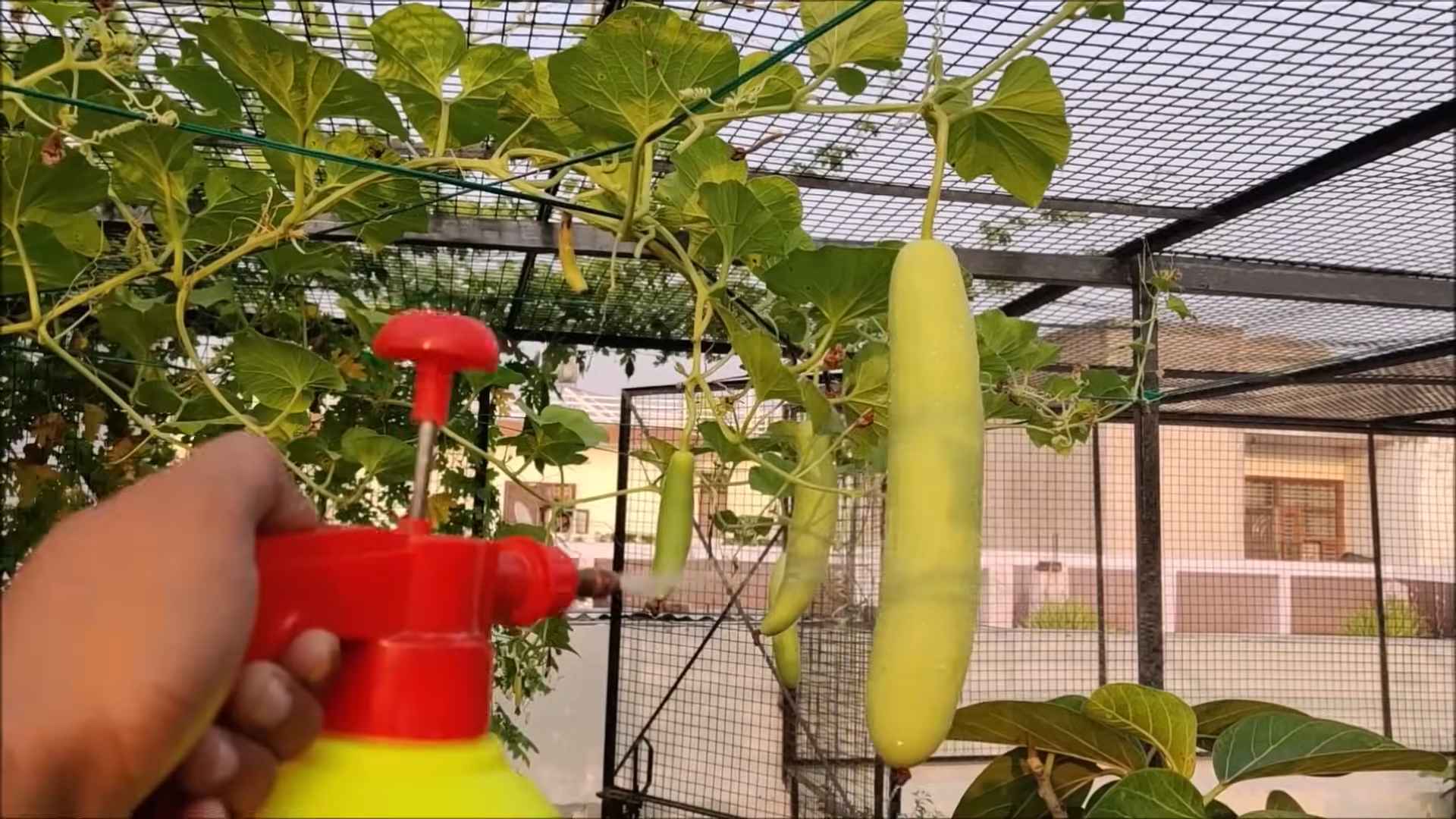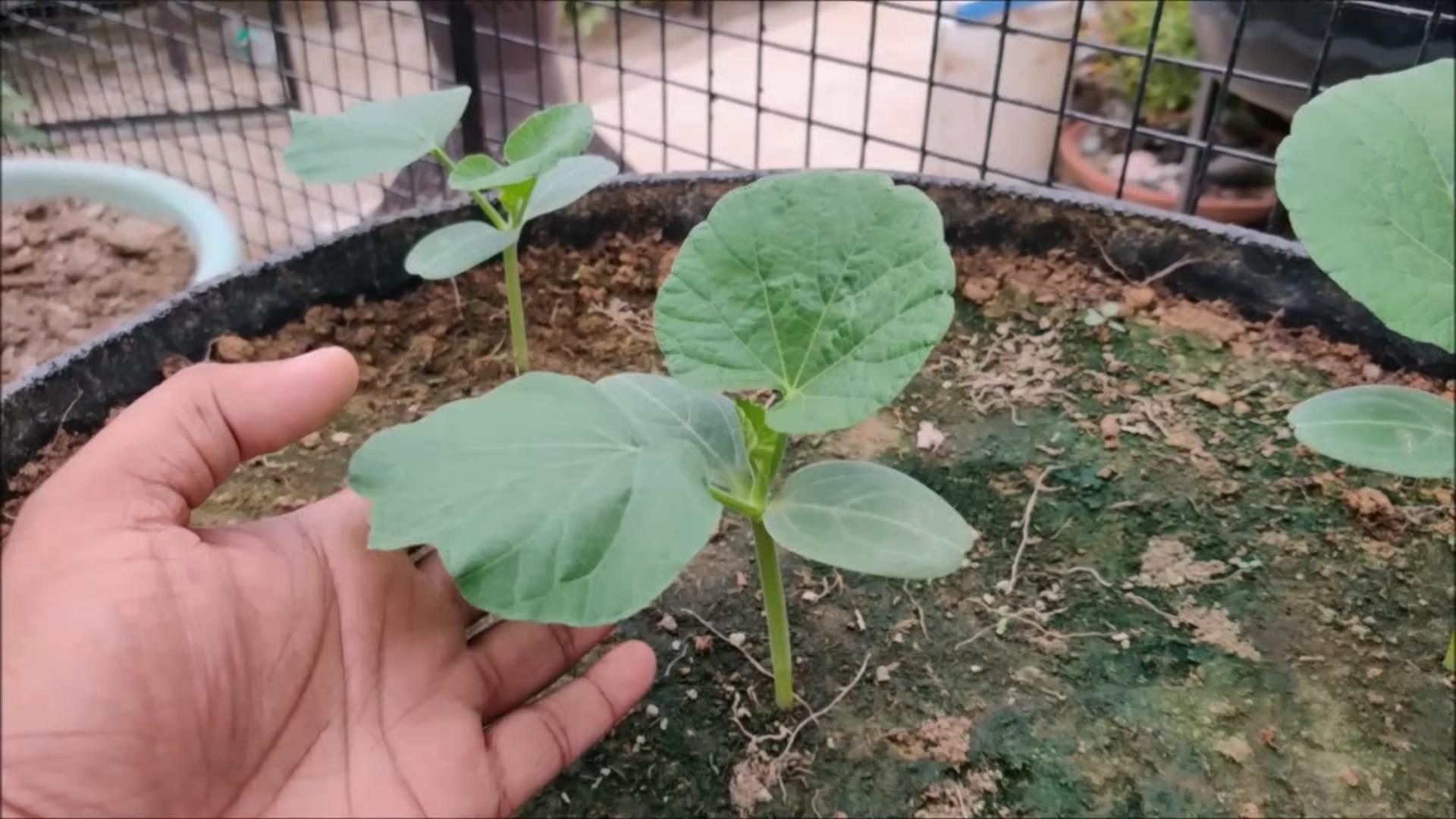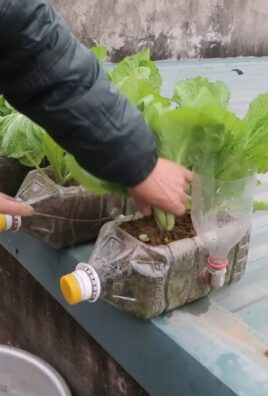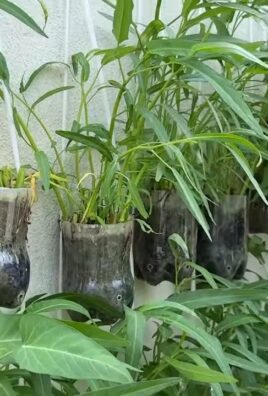Gourd gardening step by step can seem daunting, but trust me, it’s one of the most rewarding DIY projects you can undertake! Imagine transforming your backyard into a vibrant tapestry of unique shapes and sizes, all thanks to your own green thumb. For centuries, gourds have held a special place in cultures around the world, serving as everything from practical containers and musical instruments to beautiful works of art. Think of the intricate carvings on African calabashes or the vibrant painted gourds of South America – a testament to their versatility and enduring appeal.
But beyond their historical significance, why should you delve into gourd gardening? Well, in today’s world, where sustainability and self-sufficiency are increasingly valued, growing your own gourds offers a fantastic way to connect with nature and create something truly special. Plus, let’s be honest, who wouldn’t want to impress their friends and neighbors with a stunning display of homegrown, handcrafted creations? This article will guide you through gourd gardening step by step, providing you with all the essential tips and tricks to cultivate a thriving gourd patch, even if you’re a complete beginner. Get ready to unleash your inner artist and transform your garden into a gourd-geous paradise!

Growing Gourds: A Comprehensive DIY Guide for the Home Gardener
Hey there, fellow gardening enthusiasts! I’m so excited to share my experiences and tips for growing gourds. These fascinating plants are not only beautiful additions to your garden but also incredibly versatile for crafting and decorating. Get ready to dive into the wonderful world of gourd gardening!
Choosing Your Gourd Variety
Before we get our hands dirty, let’s talk about the different types of gourds you can grow. There are two main categories: ornamental gourds and hard-shelled gourds.
* Ornamental Gourds: These are the smaller, colorful gourds you often see in fall decorations. They come in a wide array of shapes, sizes, and colors. Think of the warty gourds, the apple gourds, and the pear gourds. They’re generally not edible and are primarily grown for their aesthetic appeal.
* Hard-Shelled Gourds (Lagenaria): These are the gourds that, when dried, become incredibly durable and can be used for crafting bowls, birdhouses, dippers, and even musical instruments! Popular varieties include bottle gourds, dipper gourds, and birdhouse gourds.
I personally love growing a mix of both! It adds visual interest to my garden and gives me plenty of crafting materials later on. When choosing your variety, consider your climate, the space you have available, and what you plan to do with the gourds after harvest.
Preparing Your Garden Bed
Gourds are hungry plants, so preparing the soil is crucial for a successful harvest. They need plenty of sunlight and well-drained soil rich in organic matter.
* Sunlight: Gourds need at least 6-8 hours of direct sunlight per day. Choose a location in your garden that gets plenty of sunshine.
* Soil: Gourds prefer a slightly acidic to neutral soil pH (around 6.0 to 7.0). Amend your soil with compost, aged manure, or other organic matter to improve drainage and fertility.
* Space: Gourds are vining plants and need plenty of space to spread out. If you’re growing them on the ground, allow at least 4-6 feet between plants. If you’re growing them on a trellis, make sure the trellis is sturdy enough to support the weight of the mature gourds.
Planting Your Gourd Seeds
You can either start your gourd seeds indoors or direct sow them in your garden. I prefer to direct sow them because gourds don’t always transplant well.
1. Timing: Wait until the soil has warmed up to at least 65°F (18°C) before planting your gourd seeds. This is usually a couple of weeks after the last frost in your area.
2. Sowing: Sow the seeds about 1 inch deep and 2-3 inches apart.
3. Watering: Water the seeds gently but thoroughly after planting. Keep the soil consistently moist until the seedlings emerge.
4. Thinning: Once the seedlings have a few true leaves, thin them out to the desired spacing (4-6 feet apart if growing on the ground).
Caring for Your Gourd Plants
Once your gourd plants are established, it’s important to provide them with the care they need to thrive.
* Watering: Water your gourd plants regularly, especially during dry spells. Aim to keep the soil consistently moist but not waterlogged.
* Fertilizing: Feed your gourd plants with a balanced fertilizer every few weeks. You can also side-dress them with compost or aged manure.
* Weeding: Keep the area around your gourd plants free of weeds. Weeds can compete with your gourds for nutrients and water.
* Pruning: Pruning isn’t strictly necessary, but it can help to improve air circulation and prevent disease. You can prune away any dead or yellowing leaves.
* Pollination: Gourds have separate male and female flowers. The female flowers need to be pollinated in order to produce fruit. If you’re not seeing many gourds developing, you may need to hand-pollinate the flowers. To do this, simply use a small paintbrush to transfer pollen from the male flowers to the female flowers.
Training Your Gourds (Optional)
If you’re growing hard-shelled gourds, you might want to train them to grow on a trellis. This can help to keep the gourds off the ground and prevent them from rotting.
1. Choose a sturdy trellis: Make sure your trellis is strong enough to support the weight of the mature gourds.
2. Guide the vines: As the gourd vines grow, gently guide them up the trellis. You can use twine or plant ties to secure them to the trellis.
3. Provide support for the gourds: As the gourds develop, you may need to provide additional support for them. You can use slings made from old pantyhose or netting to support the gourds.
Dealing with Pests and Diseases
Gourds are generally relatively pest-resistant, but they can be susceptible to certain pests and diseases.
* Squash bugs: Squash bugs are common pests of gourds. They suck the sap from the leaves and can cause the plants to wilt and die. You can control squash bugs by hand-picking them off the plants or by using an insecticidal soap.
* Squash vine borers: Squash vine borers are another common pest of gourds. The larvae of these moths bore into the stems of the plants and can cause them to collapse. You can prevent squash vine borers by wrapping the stems of the plants with aluminum foil or by using a row cover.
* Powdery mildew: Powdery mildew is a fungal disease that can affect gourds. It appears as a white, powdery coating on the leaves. You can prevent powdery mildew by providing good air circulation and by avoiding overhead watering. If your plants do get powdery mildew, you can treat them with a fungicide.
Harvesting Your Gourds
The timing of your gourd harvest will depend on the type of gourd you’re growing.
* Ornamental Gourds: Harvest ornamental gourds when they are fully mature and the stems have started to dry out. Cut the gourds from the vine, leaving a few inches of stem attached.
* Hard-Shelled Gourds: Harvest hard-shelled gourds when they are fully mature and the stems have completely dried out. The gourds should feel lightweight and the seeds should rattle inside. Cut the gourds from the vine, leaving a few inches of stem attached.
Drying and Curing Hard-Shelled Gourds
This is a crucial step for hard-shelled gourds! Proper drying and curing will ensure they last for years.
1. Cleaning: Gently wash the gourds with soapy water to remove any dirt or debris.
2. Drying Location: Find a well-ventilated, dry, and dark place to dry your gourds. A shed, garage, or attic works well. Avoid direct sunlight, as it can cause the gourds to crack.
3. Arrangement: Place the gourds on a wire rack or hang them individually, making sure they don’t touch each other. This allows for good air circulation.
4. Patience is Key: This process can take several weeks or even months, depending on the size and thickness of the gourd. You’ll know the gourds are dry when they feel lightweight and the seeds rattle inside. Mold may appear on the surface during drying – don’t worry! Just wipe it off with a diluted bleach solution (1 part bleach to 10 parts water).
5. Checking for Rot: Regularly inspect the gourds for soft spots or signs of rot. Discard any gourds that are rotting to prevent the spread of mold.
Crafting with Your Gourds
Once your hard-shelled gourds are completely dry, the fun begins! The possibilities are endless.
* Cleaning the Dried Gourd: Use a scouring pad or sandpaper to remove the outer skin of the gourd. This can be a bit messy, so wear a dust mask.
* Cutting and Shaping: Use a saw or rotary tool to cut and shape the gourd. Be careful and wear safety glasses.
* Decorating: Paint, carve, wood burn, or embellish your gourds with beads, shells, or other materials. Let your creativity shine!
* Sealing: Apply a sealant to protect your finished gourd craft. This will help to prevent moisture from damaging the gourd.
Troubleshooting Tips
* Gourds not setting fruit: This could be due to poor pollination. Try hand-pollinating the flowers.
* Gourds rotting on the vine: This could be due to poor air circulation or excessive moisture. Try training the gourds to grow on a trellis or providing better drainage.
* Gourds cracking during drying: This could be due to rapid drying. Make sure the gourds are drying in a well-ventilated but not overly dry location.

Conclusion
So, there you have it! A comprehensive guide to successfully cultivating your own gourds, from seed to stunning decorative pieces. This isn’t just about growing a plant; it’s about embarking on a rewarding journey that connects you with nature and unlocks your creative potential. The satisfaction of harvesting a gourd you nurtured from a tiny seed is unparalleled, and the possibilities for transforming it into art are truly endless.
Why is this DIY gourd gardening trick a must-try? Because it’s more than just a gardening project; it’s an investment in a sustainable, creative, and fulfilling hobby. Store-bought gourds simply can’t compare to the unique shapes, sizes, and textures you can achieve when you grow your own. Plus, you have complete control over the growing process, ensuring your gourds are healthy and free from harmful chemicals.
Don’t be afraid to experiment! Try different varieties of gourds to see which ones thrive in your climate and which shapes you prefer. Consider adding companion plants like marigolds or nasturtiums to deter pests and attract pollinators. You can even train your gourds to grow on trellises or arbors for a dramatic and space-saving effect.
Variations and Suggestions:
* Gourd Birdhouses: Choose bottle gourds for this project. Once dried, drill an entrance hole and drainage holes, and add a perch.
* Gourd Bowls and Utensils: Select larger, rounder gourds. After drying, carefully cut them in half and hollow them out. Sand the edges smooth and seal with a food-safe finish if you intend to use them for food.
* Gourd Art: The sky’s the limit! Paint, carve, wood burn, or decoupage your gourds to create unique works of art.
* Gourd Planters: Hollow out a gourd and fill it with potting soil to create a unique and rustic planter.
We wholeheartedly encourage you to try this DIY gourd gardening trick. It’s a fantastic way to connect with nature, unleash your creativity, and add a touch of rustic charm to your home and garden. Remember to document your progress and share your experiences with us! We’d love to see your gourd gardening triumphs and learn from your challenges. Share your photos and stories on social media using #DIYGourdGardening. Let’s build a community of gourd enthusiasts and inspire others to discover the joy of growing their own gourds! Happy gardening!
Frequently Asked Questions (FAQ)
What is the best time to start gourd seeds indoors?
The ideal time to start gourd seeds indoors is typically 6-8 weeks before the last expected frost in your area. This allows the seedlings to develop a strong root system before being transplanted outdoors. Check your local frost dates to determine the appropriate timing for your region. Starting too early can result in leggy, weak seedlings, while starting too late may shorten the growing season and reduce your harvest.
How much sunlight do gourds need?
Gourds are sun-loving plants and require at least 6-8 hours of direct sunlight per day to thrive. Choose a planting location that receives ample sunlight throughout the day. Insufficient sunlight can lead to stunted growth, reduced fruit production, and increased susceptibility to diseases. If you live in a particularly hot climate, some afternoon shade may be beneficial to prevent the gourds from scorching.
What kind of soil is best for growing gourds?
Gourds prefer well-drained, fertile soil that is rich in organic matter. Amend your soil with compost or well-rotted manure before planting to improve drainage and nutrient content. A slightly acidic to neutral soil pH (around 6.0-7.0) is ideal. Avoid planting gourds in heavy clay soil, as this can lead to root rot. If your soil is compacted, consider adding sand or perlite to improve drainage.
How often should I water my gourd plants?
Gourds need consistent moisture, especially during hot, dry weather. Water deeply and regularly, aiming to keep the soil consistently moist but not waterlogged. Avoid overhead watering, as this can promote fungal diseases. Instead, water at the base of the plants. Mulching around the plants can help retain moisture and suppress weeds. Check the soil moisture regularly and adjust your watering schedule accordingly.
How do I prevent pests and diseases from affecting my gourds?
Prevention is key when it comes to pests and diseases. Start by choosing disease-resistant varieties of gourds. Practice good garden hygiene by removing any diseased or dead leaves and debris. Rotate your crops each year to prevent soilborne diseases from building up. Monitor your plants regularly for signs of pests, such as squash bugs, squash vine borers, and aphids. Use organic pest control methods, such as insecticidal soap or neem oil, to control infestations. Ensure good air circulation around your plants to prevent fungal diseases.
When is the best time to harvest gourds?
Gourds are typically harvested in the fall, after the vines have died back and the gourds have fully matured. The gourds should be hard and dry to the touch, and the stems should be brown and dry. Leave the gourds on the vine as long as possible to allow them to fully mature and dry. Avoid harvesting gourds that are damaged or bruised, as these are more likely to rot.
How do I dry gourds properly?
Drying gourds properly is essential for preventing rot and ensuring they last for years to come. After harvesting, wash the gourds with soapy water and dry them thoroughly. Place the gourds in a well-ventilated area, such as a garage or shed, and allow them to dry for several months. Turn the gourds regularly to ensure they dry evenly. The drying process can take anywhere from 3 to 6 months, depending on the size and thickness of the gourds. You’ll know the gourds are dry when they are lightweight and the seeds rattle inside.
Can I eat gourds?
While some gourds are edible when young, many ornamental gourds are not safe to eat. It’s important to identify the type of gourd you are growing before consuming it. If you are unsure whether a gourd is edible, it’s best to err on the side of caution and avoid eating it. Some edible gourds include zucchini, squash, and pumpkins.
How can I decorate my dried gourds?
The possibilities for decorating dried gourds are endless! You can paint them with acrylic paints, carve them with wood-burning tools, or decoupage them with fabric or paper. You can also add embellishments such as beads, shells, or feathers. Let your creativity guide you and experiment with different techniques to create unique and beautiful gourd art.
What if my gourds develop mold during the drying process?
It’s not uncommon for gourds to develop mold during the drying process. If you notice mold, wipe it off with a solution of bleach and water (1 part bleach to 10 parts water). Ensure the gourds are well-ventilated and continue to dry them thoroughly. If the mold is extensive, it may be necessary to discard the gourd.




Leave a Comment